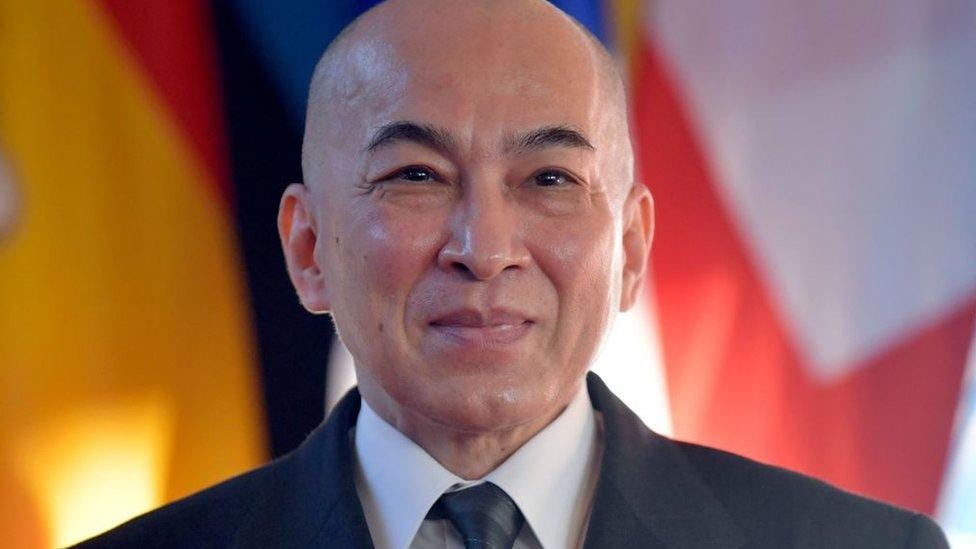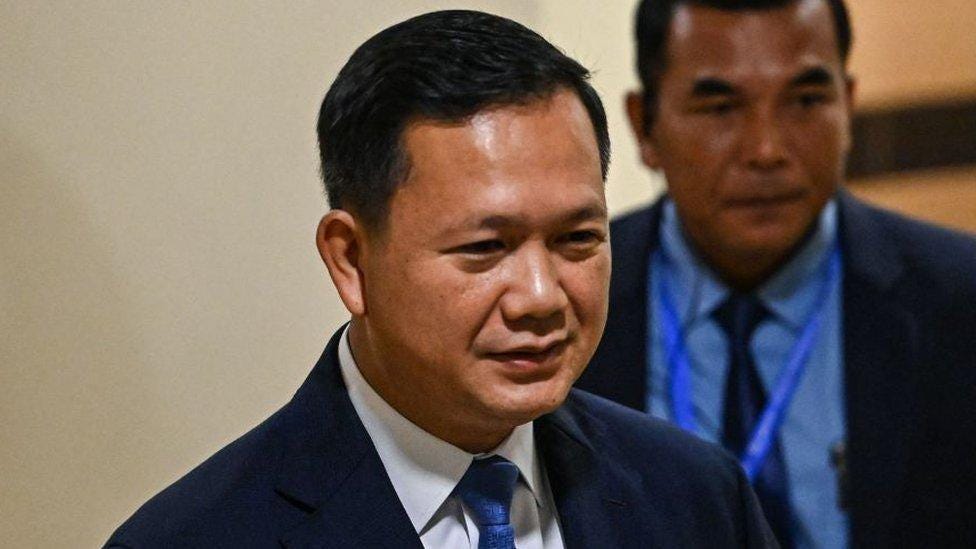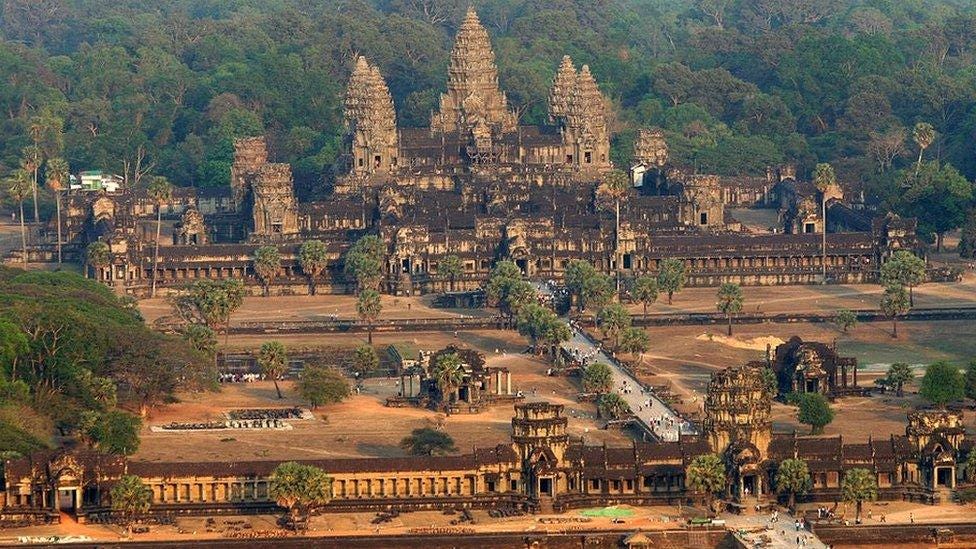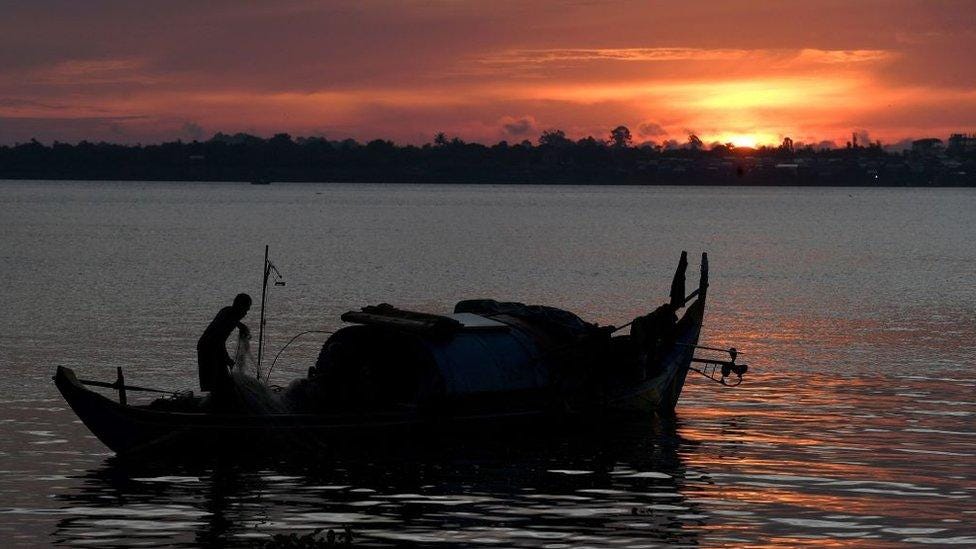Cambodia country profile
Cambodia's two largest industries are textiles and tourism, while agricultural activities remain the main source of income for many Cambodians living in rural areas.
Heir to the ancient Khmer Empire, modern-day Cambodia is now benefiting from relative stability, having endured civil war and the murderous rule of the Khmer Rouge in the 1970s.
Painful memories still endure of the radical communist Khmer Rouge's time in power under the leadership of Pol Pot between 1975 and 1978, when up to two million people died in the regime's brutal pursuit of a rural utopia.
The economy is dominated by garment-making, but tourism is expanding, and Cambodia hopes to tap into offshore oil and gas reserves and draw in overseas investment to replace aid.
Corruption is deep-rooted and Cambodia is still one of the world's poorest countries, with most of the workforce still employed in subsistence farming.
KINGDOM OF CAMBODIA: FACTS
Capital: Phnom Penh
Area: 181,035 sq km
Population: 16.7 million
Language: Khmer
Life expectancy: 68 years (men) 73 years (women)
LEADERS
Head of state: King Norodom Sihamoni
King Sihamoni - a trained ballet dancer - became king in October 2004, after his father, the widely venerated and long-serving King Sihanouk, abdicated because of poor health.
Cambodia's kings once enjoyed a semi-divine status; today, the monarch's role is mainly ceremonial.
Prime minister: Hun Manet
Hun Manet, the eldest son of Cambodia's long-term ruler Hun Sen became prime minister in August 2023 after his father earlier announced he would step down after the July 2023 elections - which critics said was not democratic.
Hun Manet, who until recently was the commander of the Royal Cambodian Army, had long been groomed for the leadership role.
The appointment follows a dynastic succession plan which had been signposted by Hun Sen for several years.
Many of the men who rose with Hun Sen through the Khmer Rouge revolution and civil war of the 1970s and 80s have also stepped down, in some cases handing their jobs to their own children.
Image caption,
Hun Sen remains as leader of the ruling Cambodian People's Party
Hun Sen will however retain leadership of the ruling Cambodian People's Party - a position political analysts say still gives him ultimate control.
His rule had become increasingly authoritarian since coming to power in 1985 - making him one of the world's longest-serving leaders - silencing opponents by either jailing or exiling them.
MEDIA
Many Cambodian newspapers and private broadcasters depend on support from political parties. Prime Minister Hun Sen and his allies control several outlets.
Cambodians "only have access to news provided by major media groups directly linked to Hun Sen", says media watchdog Reporters Without Borders (RSF).
TIMELINE
Image caption,
Angkor Wat is one of the main temples in the ancient capital of Angkor
Some key events in Cambodia's history:
802-1431 - Khmer Empire centred on Angkor. After the empire's decline, its heartland shifts south to Phnom Penh and becomes modern-day Cambodia.
1863 - Cambodia becomes a French protectorate.
1941 - Prince Norodom Sihanouk becomes king. Cambodia is occupied by Japanese forces during World War Two.
1945 - The Japanese occupation ends.
1946 - France re-imposes colonial rule. A new constitution permits Cambodians to form political parties. Communist guerrillas begin an armed campaign against the French.
1953 - Cambodia wins its independence from France. Under King Sihanouk, it becomes the Kingdom of Cambodia.
1955 - Sihanouk abdicates to pursue a political career. His father becomes king and Sihanouk becomes prime minister.
1960 - Sihanouk's father dies. Sihanouk becomes head of state.
1965 - Sihanouk breaks off relations with the US and allows North Vietnamese forces to set up bases in Cambodia as part of their fight against the US-backed government in South Vietnam.
1969 - The US begins a secret bombing campaign against North Vietnamese forces in Cambodia.
1970 - Prime Minister Lon Nol overthrows Sihanouk in coup and sends the army to fight the North Vietnamese in Cambodia. Over next few years the Cambodian army loses territory against the North Vietnamese and communist Khmer Rouge guerrillas
1975-79 - Communist Khmer Rouge, led by Pol Pot, take power. They institute a brutal totalitarian rule, leading to the deaths of up to two million people, until they are ousted by a Vietnamese invasion.
1981 - The pro-Vietnamese Kampuchean People's Revolutionary Party wins elections, but its rule is not internationally recognised.
1985 - Hun Sen becomes prime minister. Cambodia is plagued by guerrilla warfare. Hundreds of thousands become refugees.
1989 - Vietnamese troops withdraw. Hun Sen tries to attract foreign investment by abandoning socialism. The country is re-named the State of Cambodia. Buddhism is re-established as the state religion.
1991 - A peace agreement is signed in Paris, ushering in a power-sharing administration. Sihanouk becomes head of state.
1993 - The monarchy is restored, Sihanouk becomes king again. The country is re-named the Kingdom of Cambodia.
1997 - Hun Sen mounts a coup against the prime minister, Prince Ranariddh, effectively taking sole power.
2004 - King Sihanouk abdicates and is succeeded by his son Norodom Sihamoni.
2012 - Cambodia and Thailand withdraw their troops from a disputed border area near the Preah Vihear temple in line with a ruling by the International Court of Justice.
Former king, Norodom Sihanouk, dies of a heart attack.
2014 - A UN-backed court in Cambodia sentences two senior Khmer Rouge leaders to life in prison. The two, second-in-command Nuon Chea, and the former head of state Khieu Samphan, are the first top Khmer Rouge figures to be jailed.
2021 - Hun Sen announces his support for his son Hun Manet to succeed him after the next general election in 2023.
Image caption,
Cambodia's main exports include rice, fish, timber, clothing and rubber
BBC MONITORING
Overview
Cambodia's economy is characterized by rapid growth, particularly in sectors like textiles, tourism, and manufacturing, though it also faces challenges in areas like labor productivity and structural transformation. It is an open market system with significant reliance on external demand.
Key Aspects of the Cambodian Economy:
Rapid Growth:
Cambodia has experienced sustained economic growth, averaging around 7.6% annually between 1995 and 2019, and continues to recover post-COVID-19.
Leading Sectors:
Textiles and tourism are major drivers of the economy, alongside manufacturing and exports.
GDP:
In 2023, Cambodia's GDP reached $42.34 billion.
Per Capita Income:
While growing, per capita income remains relatively low compared to neighboring countries.
Agriculture:
Agriculture remains a vital sector, especially for rural communities, contributing significantly to food production and export.
Investment:
Investment, particularly in construction, has been a key driver of economic growth.
Labor Productivity:
Despite overall growth, Cambodia's aggregate labor productivity is lower than some neighboring countries, potentially hindering long-term wage growth.
Structural Transformation:
The pace of labor shifting from low-productivity agriculture to higher-productivity sectors like manufacturing has slowed, affecting the overall economy.
Challenges:
Cambodia faces challenges in diversifying its economy, improving workforce skills, and addressing the impact of external factors like tariffs.
Natural Resources:
Cambodia possesses natural resources like gemstones, gas, oil, and timber.
Global Integration:
Cambodia is actively participating in regional trade agreements like the Regional Comprehensive Economic Partnership (RCEP).
Economic Outlook:
The Cambodian economy is projected to continue growing, with opportunities in various sectors like electronics, automotive parts, and food processing.
Economy of Cambodia
Article Talk
Cambodia's economy that currently follows an open market system (market economy) and has seen rapid economic progress in the last decade. Cambodia had a gross domestic product (GDP) of $28.54 billion in 2022. Per capita income, although rapidly increasing, is low compared with most neighboring countries. Cambodia's two largest industries are textiles and tourism, while agricultural activities remain the main source of income for many Cambodians living in rural areas. The service sector is heavily concentrated on trading activities and catering-related services. Recently, Cambodia has reported that oil and natural gas reserves have been found off-shore.
Economy of
Cambodia
Phnom Penh, the capital and largest city of Cambodia
Currency
Riel (KHR, ៛)
Fiscal year
Calendar year
Trade organisations
WTO, ASEAN, AFTA, RCEP, SCO, G77
Country group
Least developed
Lower-middle income economy
Statistics
Population
Increase 17,181,065 (2024)
GDP
Increase $51.15 billion (nominal, 2025 est.)
Increase $150.59 billion (PPP, 2025 est.)
GDP rank
94th (nominal, 2025)
86th (PPP, 2025)
GDP growth
3.1% (2021) 5.1% (2022)
5.0% (2023) 6.0% (2024)
GDP per capita
Increase $2,948 (nominal, 2025 est.)
Increase $8,677 (PPP, 2025 est.)
GDP per capita rank
140th (nominal, 2025)
130th (PPP, 2025)
Source: Wikipedia










